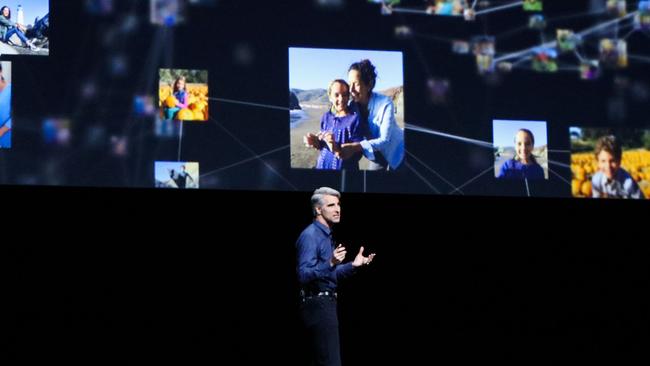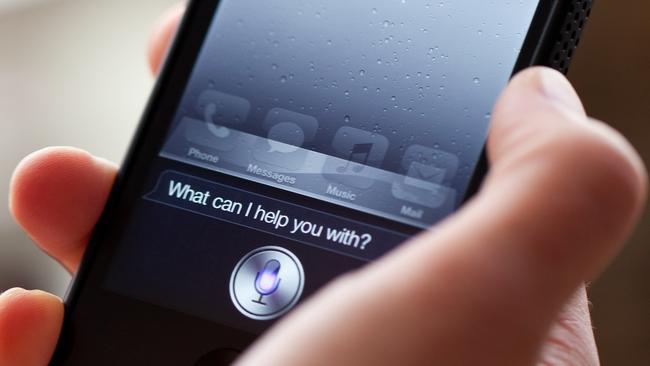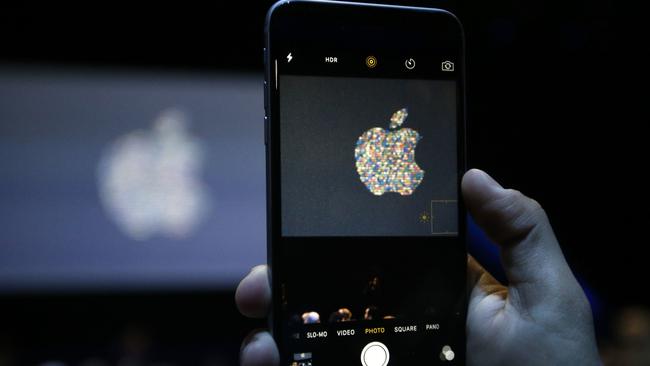Siri, Alexa and tomorrow’s voice-recognition today
Typing rapidly is becoming a dying art as better voice recognition takes technology to a new level of user-friendliness.

Is the keyboard dying? While it’s foolhardy to predict its demise, it’s safe to say our QWERTY friend has a more limited tenure. Once humankind is confident that voice recognition is accurate and a computer does exactly what you ask it, there’s no going back to using a keyboard 24/7.
Not only will Apple’s personal assistant, Siri, come to the Mac but the company’s 13 million developers also will be able integrate Siri into their apps for iPhone and iPad, Apple has said at its Worldwide Developers Conference in San Francisco this week.
Soon you’ll be able to ask Siri to order goods online, book a medical appointment, buy you a pizza and pay your registration and council rates — provided developers take up the challenge.
That’s in addition to the myriad things Siri does now on a phone, such as look up the weather, add a calendar entry and tell you interesting facts such as the distance to a holiday destination.

Voice soon will be on the way to becoming king in man’s communication with device on mobile. As sure as night follows day, you can bet we’ll see third-party apps with Siri integration making its way to the Mac, although nothing is announced just yet. But when it does happen, keyboard use will be in decline.
Sure, you still may type out your documents on a conventional keyboard, as humans have done since the typewriter, but even here voice dictation is getting so good that using QWERTY for this may not be necessary for too long.
History already shows us that where voice commands work, we migrate quickly. In 2014 Google published research about its search. It said more than half of teens (13-18) used voice search daily, while 41 per cent of adults talked to their phones every day and 23 per cent used voice search while cooking.
This is just mobiles and voice searching. But it shows people will migrate from traditional typing once they view the voice alternative as reliable and they are confident it can carry out the commands they ask.
That confidence is coming.

Across time, I’ve found myself using voice interaction more. My SMS messages are mostly dictated and so are emails. Yes, Siri and its counterparts make mistakes, but with Siri at least it takes less time fixing them up than typing messages from scratch.
Last year I bought an Amazon Echo, a speaker-like device with built-in intelligence, to control lights and appliances at home.
Amazon Echo’s voice assistant, Alexa, under development since about 2010, has proved a success despite the company being preoccupied with its rollout in the US. (It’s such a shame Echo hasn’t been launched officially in Australia, but that’s Amazon for you.)
Overseas, cynical and hardened technology journalists have swooned over Alexa.
She is amazingly accurate in understanding when I want her to switch things on and off.
Echo now builds my weekly shopping list. When I go to the fridge and notice I’m out of milk, I just call out “Alexa, add milk to the shopping list”, and it’s on the list when I open the Amazon Echo app at the supermarket.

She holds rudimentary conversations to clarify what I ask. Echo is integrated with more than 1000 services, so as well as telling me the weather, playing Spotify tracks or reading out a (US-centric) news bulletin, I can ask Alexa how to mix various cocktails.
She integrates with an amazing internet of things website, IFTTT.com. IFTTT stands for “if this then that” and is a way of connecting services to extend the capability of Echo as a voice command service.
Even now Apple’s Siri is pretty useful too. With iPhone 6s and some older phone models connected to power, Siri has an “always on” feature where it responds to commands even when the phone screen is black and the device is locked.
A second processor on the phone known as a co-processor is always active, listening for the magic phrase “Hey Siri”.
It awakens the phone, which then responds.
So I can say, “Hey Siri, what’s the time?”, or “What’s the weather tomorrow?”, even when it’s dark and in the middle of the night, and Siri will answer. (Don’t risk the wrath of your partner trying it, though.)

I have confidence in functionality such as this most of the time. I never open the Apple weather app manually to look up a forecast and I set alarms by voice.
Sure, at work I still type my news stories, although I have tried dictating them several times.
Dictation is accurate enough but the structure of language in print is tighter than conversation so I rework it anyway. But in future a voice assistant will probably help me with this and I’ll write news stories with my feet on the desk, dictating as I go, and forget about the keyboard.
Voice is definitely on the march. For example, for a while Google Now has been able to understand the context of conversations. Ask it who Bill Clinton is, then ask who his wife is, then ask what her birthday is, and it knows the “her” is Hillary Clinton from previous queries.
We can hold a conversation with a device that learns what we are talking about as we go.
Siri has a similar capability.
On Apple TV, you can already search for “movies with George Clooney” by voice, then specify “the latest ones”. Soon you’ll search for movies by topic by saying, for example, “Find high school comedies from the 80s”.

Apple’s decision to take voice with Siri further on this road will make it a gradually increasing choice for interaction with its devotees. On an iPhone using chat applications such as WeChat, WhatsApp and Slack, you’ll soon be able to tell Siri: “WeChat Nancy I’ll be five minutes late” or “Tell Nancy on WeChat that I’ll be five minutes late”, and have confidence in this working.
On Macs, Siri will search for documents when issued with requests such as “show me the ones Ken sent me that I tagged as a graph”. You’ll be able to drag Siri search results, such as images, straight into a document: a case of voice and conventional interaction working together. But I suspect the next step could be asking Siri to paste it in “after the photo of the snake”.
That’s because computers are also getting better at recognising shapes and objects in photos.
At the conference, Apple announced features such as object and scene recognition as well as face recognition in your photo collection. Apple Photos will show photos of an event by people present, and under various headings such as location, object type and under categories the app creates.
In future, that may see Siri respond to increasingly sophisticated requests for compiling graphic objects.

Apple also has announced it will soon use voice recognition to transcribe voice messages left by your friends when they call.
Presumably you’ll receive them as a text message or email. Details are sketchy as is whether Australian telcos will be part of this scheme. But it’s another indicator of the power of this technology.
The rise of voice is but one theme explored at the Worldwide Developers Conference.
Machines further working together is another. For example, soon you’ll be able to log in to a MacBook using an Apple Watch that’s already authenticated. You simply tap the watch.
And a universal clipboard will let you copy information, say, on an iPhone, then immediately paste it into a document on a Mac.
Overall there were two hours of announcements of upgrades to Apple’s four software operating systems: iOS10 for iPhone/iPad; the renamed macOS Sierra for MacBook computers; and watchOS 3 and tvOS 3 for Apple Watch and Apple TV. Consumer versions will be available in the third quarter of this year. There were no announcements of new hardware, including no new MacBooks. There have been upgrades at previous WWDC events.
This year’s conference was attended by more than 5000 people, with more than 100 young developers under 18. The youngest, Australian Anvitha Vijay, 9, was praised by Apple chief executive Tim Cook for her success in building apps for kids.
Chris Griffith travelled to Apple’s Worldwide Developers Conference in San Francisco courtesy of Apple.


